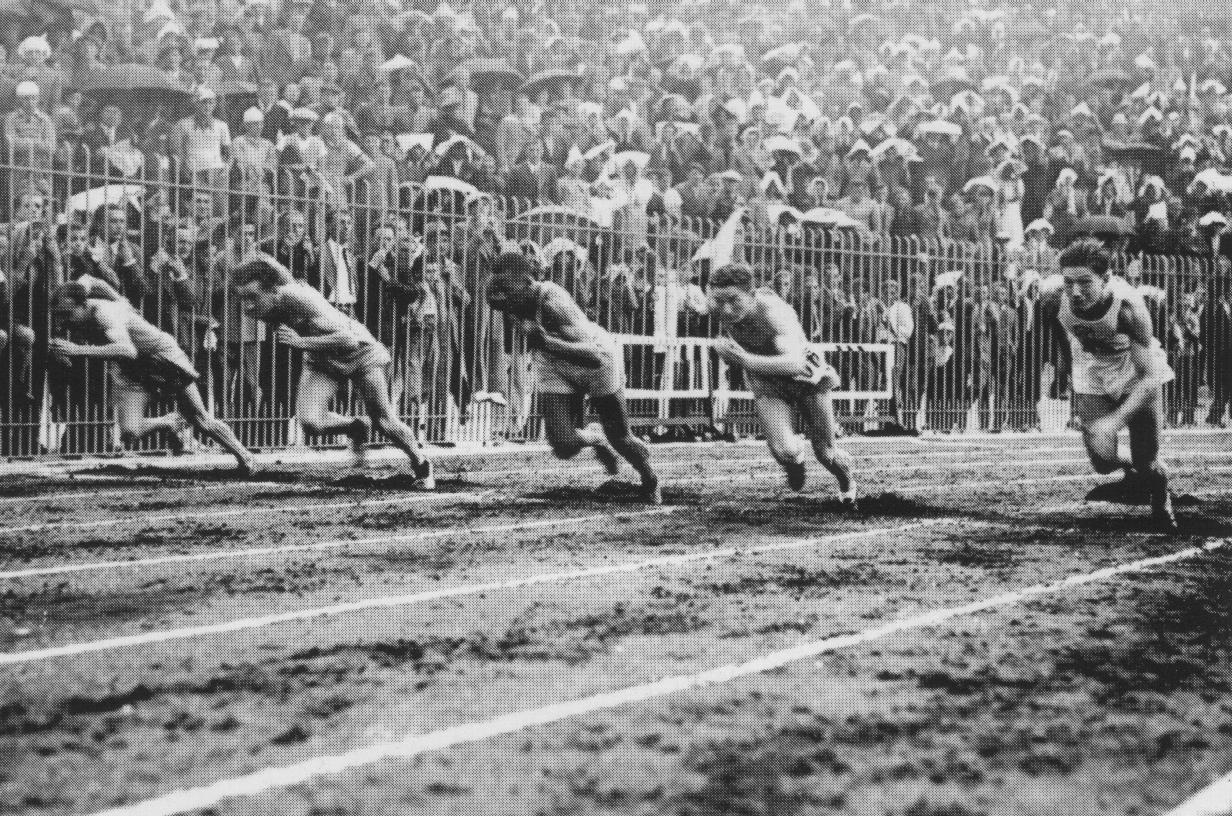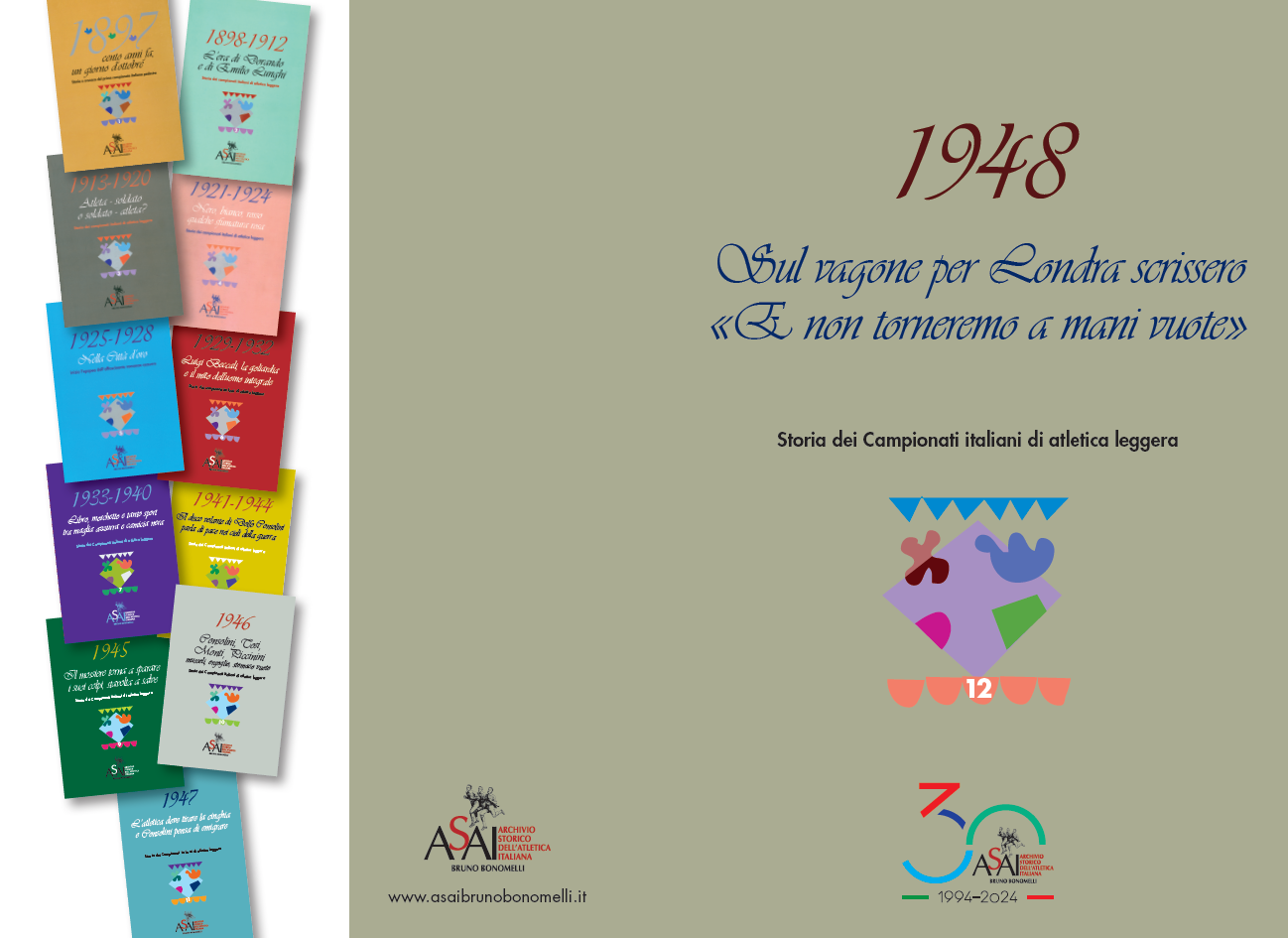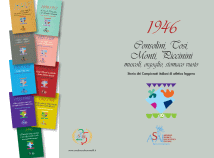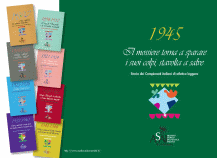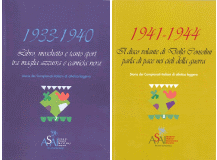Life is sometimes a matter of mere luck: opportunities you are able to take advantage of, simply because you happen to be in the right place at the right moment. Regarding 1936 Berlin Olympics, we can undoubetly state that at 100m Jesse Owens managed to get that lucky opportunity, and that his countryman Eulace Peacock didn’t. Things might have gone differently but in august 1935, in Milan, in a wet afternoon, something went wrong. For Eulace it was the beginning of a calvary that lasted one whole year.
Italian newspapers introduced Peacock to the readers as «the world’s fastest human being» (Corriere della Sera 8/8, Gazzetta dello Sport 14/8, Popolo d’Italia 24/8), giving evidence of being well informed about track facts of the United States: «Two american dashmen sparkled in the last months: Owens and Peacock. Owens was chronologically the first to achieve great results, but at the national AAU championships he was overshadowed by a new brighter star, Eulace Peacock» (Luigi Ferrario, Gazzetta dello Sport 24/8); «One month ago Peacock clearly defeated all his countrymen in a race of great level in Lincoln» (Bruno Zauli, Littoriale 24/8). Here is the result ot the 100m final of the 1935 AAU championships, held on july the 4th at the university of Nebraska Memorial Stadium in the State capital of Lincoln:
|
|
tailwind + 3,47 m/s
|
|
|
|
1.
|
Eulace Peacock
|
Temple University
|
10.2
|
|
2.
|
Ralph Metcalfe
|
Marquette University
|
10.3 estimated time
|
|
3.
|
Jesse Owens
|
Ohio State University
|
10.4 estimated time
|
Eulace shot ahead at the halfway mark, then held off a vehement challenge from Metcalfe, number one in the world in 1933 and 1934. As an AAU champion, Peacock was included in the team which was to tour Europe that summer. In the old continent, before coming to Italy, he competed in ten finals at 100 meters and one at 100 yards, winning them all but a handicap race in which it was practically impossible to cross the finish line ahead of all other competitors. The US team arrived to Milan by train on august the 24th, at 10.40 in the morning, and set off on the long (by ship) journey back to America on august the 26th, heading for Le Havre, from where it sailed back home.
In the italian meeting, held on august the 25th, the 100 meters race was crowded with no less than 15 sprinters, divided into three heats; many of them belonged to an age group strongly supported by the local authorities, a policy aimed to allow those young dashmen to gain experience. This political choice was criticized by a reporter: «We regret about the high number of athletes who are going to compete, in our opinion useless in an international meeting, that will force the organizers to schedule heats» (Littoriale 24/8). The event attracted 25000 spectators, for an incom of 80000 Lires, and a sponsorship by a big farm named Industria Italiana del Rayon, but the bad weather spoiled it, with headwind in the homestretch and rain. The heats of the 100 meters opened the meeting but, scheduled at 15.45 (with the final at 16.35), were run with 15 minutes of delay. The US champ won the third and last heat in 11.1, coasting to the tape with a minimum effort; the onlookers understood he was content just with winning, and tributed him a standing ovation. During this race the sky was clouded, and there was a light breeze blowing from west. As far as the final is concerned, italian sources agree to state that in that precise moment (a few minutes before 5 p.m.) it was just drizzling, and that it started pouring heavily only after 17 o’clock. Here are the reports of the italian newspapers about the final:
Emilio Colombo, Gazzetta dello Sport august the 26th: «The american sprinter faded, knocked out by a painful muscle pull that occurred when this talented, agile but at the same time powerful athlete, was in full effort during the 100 meters final. The injury he fell victim of was evident to all the eye-witnesses».
Luigi Ferrario, Gazzetta dello Sport august the 27th: «In the 100m final the flying afro-american had a good start, but had to struggle all the way in order to get the upper hand of our Toetti. This close duel offered also an interesting comparison between two kind of styles whose difference was first of all underlined by the position of the trunk. Leaned forward and with the head down like a soldier launching his assault Toetti; accentuated arm swing with fists working like pistons, running evenly and balanced with a perfectly upright position of his torso Peacock. After 80 meters, all of a sudden, one muscle of Peacock’s thigh strained; he was forced to ease up, and was defeated».
Giorgio Boriani, Littoriale august the 26th: «Peacock took the lead from the very beginning, and Toetti was the fastest out of the blocks among the rest of the field. Edgardo, with his high-frequency of strides rhythm, managed to stay close to the flying afro-american. In the last 20 meters he gave the impression to increase his speed, and breasted the tape in front of the other competitors. But the credit of our sprinter success, as a matter of fact, was due to an injury suffered by the US 100m champion. A muscle pull to his left leg, forced Peacock to discontinue his action and to slow down. We all noticed the sudden shake of his body at about the 90 meters point. He managed to cross the finish line only thanks to his will-power, and it was clear that he couldn’t run at his best. The performance of Edgardo Toetti was really admirable, but we owe to recognize that without the injury Peacock would have won handily, as in the moment of the muscle pull he was leading by two meters».
Paolo De Cecco, Popolo d’Italia august the 27th: «Peacock, the flying afro-american as they use to call him, took the lead from the start, moving the crowd to enthusiasm with his impressive drive, with Toetti and Paul fighting shoulder to shoulder for the second place. Then, after 80 meters, the leader began to limp and slowed down, and Toetti, drawing on all his left over energies, caught up with the american and defeated him by a scant margin, with Paul close behind. A muscle pull hampered the marvelous US sprinter just when he was about to change to his higher gear, suddenly breaking off his drive. The american would have certainly won the race, but the performance of our Toetti was surely noteworthy, as he defeated an appreciated champion such as Robert Paul and run an 11 seconds flat that is really a good time if you take into consideration the fact that the day was marred by the rain and a gusty weather».
Final result:
|
1.
|
Edgardo Toetti
|
Pro Patria Milano
|
11.0
|
lane 1
|
|
2.
|
Eulace Peacock
|
United States
|
11.0
|
lane 4
|
|
3.
|
Robert Paul
|
France
|
11.1
|
lane 6
|
|
4.
|
Orazio Mariani
|
Sport Club Italia Milano
|
11.2
|
lane 5
|
|
5.
|
Elio Ragni
|
Sport Club Italia Milano
|
11.4
|
lane 3
|
|
6.
|
Tullio Gonnelli
|
Virtus Bologna Sportiva
|
11.5
|
lane 2
|
Ferrario was the only journalist who tried to explain the injury from a technical point of view: «How did the strain happen? Last sunday was a cold day, with a high degree of humidity in the atmosphere, and muscles needed a longer than usual warm-up to be ready to work properly. Perhaps, the warm-up was not long enough. We do not know. We know for certain only one fact: the muscle pulled in the very moment Peacock tried to further increase his speed. The technique operation requested in order to change gear when you already are in full effort, consists in both a more pronounced arms action and a more efficacious push of the feet at touchdown on the ground; your knees lift by themselves, and you shift from running to flying. Perhaps, it was this gearing up technique operation that had hurtful effects on the muscle. Again, we do not know. Only one thing is for certain: the bystanders will never forget the marvelous stride of this gifted athlete» (Gazzetta dello Sport august the 27th). Together with the two hypoteses of Luigi Ferrario, we must remember the toxins accumulated by Peacock during those useless heat, the long european tour, and the whole season, a season that began at the end of april at the Penn Relays and saw him always battling not only on the track, but also at long jump.
The following year, at the Penn Relays in Philadelphia, by the end of april, Peacock tore a hamstring muscle again, very likely in consequence of what had happened in Italy eight months before. Granted dispensation to miss the qualifying standards, Eulace was allowed to take part in the Trials, held in july, but, with the thigh heavily bandaged, he pulled up halfway through his 100 meters heat. The leg injury suffered in Italy in 1935 destroyed his chances to prove he was the world’s fastest human being of the time and, with a probable gold medal at 100m in the 1936 Olympic Games, to gain universal fame (m.m.).


